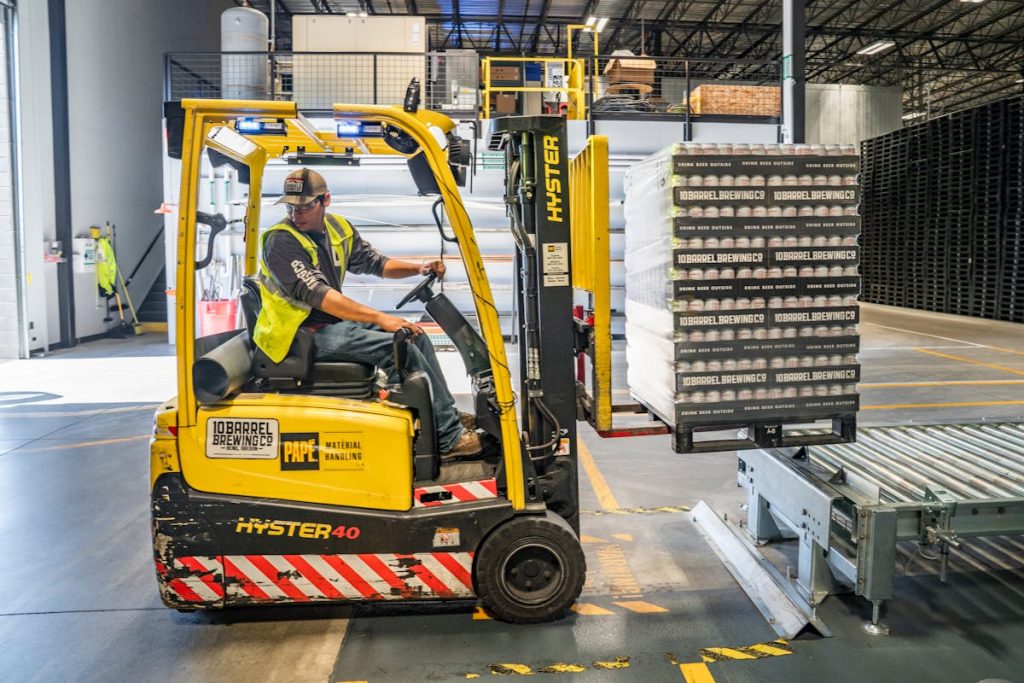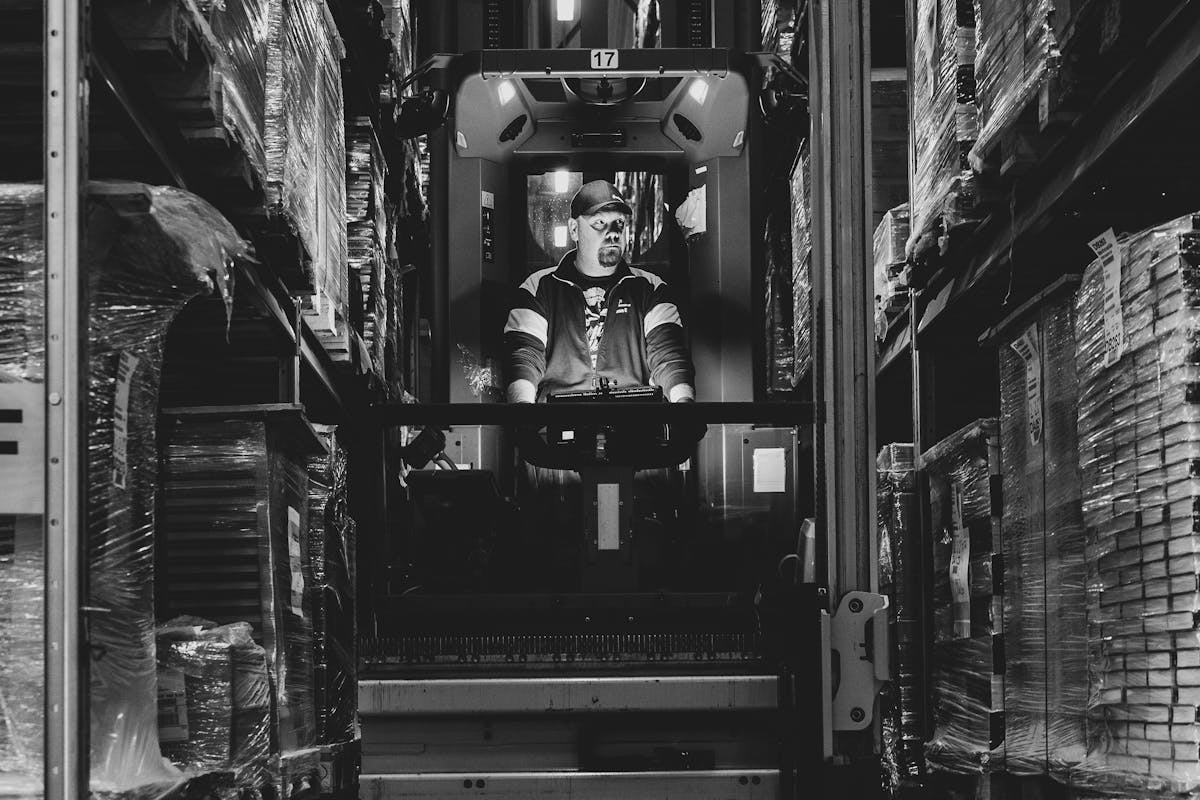
ASRS and modern equipment boost warehouse efficiency by automating storage and streamlining heavy material handling.- RFID technology enhances inventory tracking and reduces errors, enabling real-time supply chain visibility.
- WMS optimizes warehouse operations, providing real-time data for better decision-making and process efficiency.
- AMRs work alongside humans to improve productivity and safety, adapting to fluctuating operational needs.
- AR expedites onboarding and order-picking accuracy, offering visual aids for training and real-time guidance.
Singapore has long been recognized as a logistics and supply chain management hub. With the rise of e-commerce, the demand for warehousing and fulfillment services has surged, making it more critical than ever for businesses to optimize their warehouse operations. Fortunately, technology has come to the rescue with various game-changing solutions to enhance warehouse productivity.
This blog post explores some of these technologies and how they can help businesses in Singapore streamline their operations and stay ahead of the competition.

Automated Storage and Retrieval Systems (ASRS)
ASRS is a system that uses robotics technology to automate warehouse storage and retrieval processes. It eliminates human error while increasing efficiency, accuracy, and speed. ASRS systems are ideal for warehouses with high-density storage requirements as they reduce the need for aisles between racks. They use sophisticated algorithms to determine optimal picking paths, resulting in faster order fulfillment times, reduced labor costs, and improved inventory accuracy.
Modern Warehouse Heavy Equipment
Aside from ASRS, modern heavy warehouse equipment has also revolutionized warehouse operations. With technological advancements, heavy equipment such as forklifts and pallet jacks are now equipped with sensors and other smart features that enable them to communicate with other equipment and warehouse management systems. You should look for a reliable forklift for sale to move materials around the warehouse. Some forklifts have real-time monitoring features that enable you to track their location, fuel usage, and maintenance schedule. This allows for better fleet management and reduces the risk of equipment breakdown.
Radio Frequency Identification (RFID)
RFID technology enables real-time inventory tracking by attaching tags to products or packaging materials. RFID readers throughout the warehouse can detect these tags remotely without requiring line-of-sight access or manual scanning like barcodes do. This technology helps businesses track inventory movement across various stages in their supply chain – from manufacturing to delivery – ensuring that everything is found and noticed along the way.
Reduce Errors and Manual Tasks
Beyond mere tracking, RFID substantially reduces manual tasks and associated errors. By automating counting and verification processes, employees can focus on more critical tasks that require human judgment. Particularly beneficial for inventory control, RFID systems provide up-to-the-minute, accurate inventory levels, facilitating better demand forecasting and more efficient stock management. This real-time visibility also empowers swifter responses to discrepancies, theft, or stock-outs, enhancing the ability to conduct more frequent and less disruptive inventory audits.
Warehouse Management Systems (WMS)
A WMS is a software solution designed specifically for managing warehouse operations efficiently. It provides real-time visibility into inventory levels, order status updates, shipping schedules, etc., enabling businesses to quickly make informed decisions about their warehouse operations. A WMS helps eliminate manual processes such as paper-based transactions, thus reducing errors and improving overall efficiency.
Optimize Processes
Warehouse Management Systems (WMS) utility extends to optimizing picking processes and labor allocation, ensuring that workers are guided to the correct items with precision and speed. Integrating mobile devices and barcode scanners allows a WMS to direct workflow, reducing wasted time and effort as workers navigate vast warehouse spaces.
Predictive Analytics
Additionally, advanced WMS offerings include features like predictive analytics, which use historical data to forecast future demand and guide stocking decisions. Such forward-looking capabilities are instrumental for businesses that aim to reduce overstocking or understocking, thus minimizing carrying costs and maximizing service levels.
Autonomous Mobile Robots (AMRs)
AMRs are robots that can move around the warehouse autonomously, performing various tasks such as picking and transporting goods. They use advanced sensors and machine learning algorithms to navigate the warehouse safely, avoiding obstacles. AMRs help reduce labor costs while improving the warehouse’s speed, accuracy, and overall productivity.
Enhancing Collaboration with Human Workers
Integrating AMRs in warehouse operations automates tedious and repetitive tasks and facilitates a collaborative ecosystem with human workers. This collaborative approach, often called ‘cobots,’ allows AMRs to handle routine material transport, enabling warehouse employees to focus on more complex tasks that require human skills and decision-making. Furthermore, AMRs can be scaled according to operational demands, providing flexibility during peak seasons or unexpected surges in order volume.
Improved Safety and Ergonomics
Autonomous Mobile Robots also contribute significantly to warehouse work’s safety and ergonomic aspects. By taking over heavy-duty carrying and fetching tasks, AMRs minimize the physical strain on human workers and reduce the risk of workplace injuries. This not only leads to a healthier work environment but can also lead to a decline in workers’ compensation claims and related costs.

Augmented Reality (AR)
AR technology overlaps digital information in the real world through smart glasses or smartphone screens. In a warehouse setting, AR can guide workers in picking items from shelves by highlighting them on a screen, ensuring faster and more accurate order fulfillment. AR also helps reduce training time for new employees by providing them with visual aids that make it easier to understand complex processes.
Streamlined Onboarding and Training
Augmented Reality profoundly transforms the onboarding and training process within warehouses. New employees wearing AR headsets can receive real-time instructions overlaid onto their field of vision, swiftly becoming proficient in their roles without extensive reading or coaching. This hands-on training method accelerates the learning curve and helps maintain operational productivity even as new staff is integrated.
In conclusion, technology has revolutionized warehousing operations in Singapore, enabling businesses to stay ahead of the competition by optimizing their supply chains. With technologies like ASRS, RFID, WMS, AMRs, and AR, businesses can streamline operations while reducing costs and improving efficiency. As e-commerce continues to grow in Singapore and globally, investing in these game-changing technologies is no longer an option but necessary for businesses looking to thrive in this highly competitive market.
